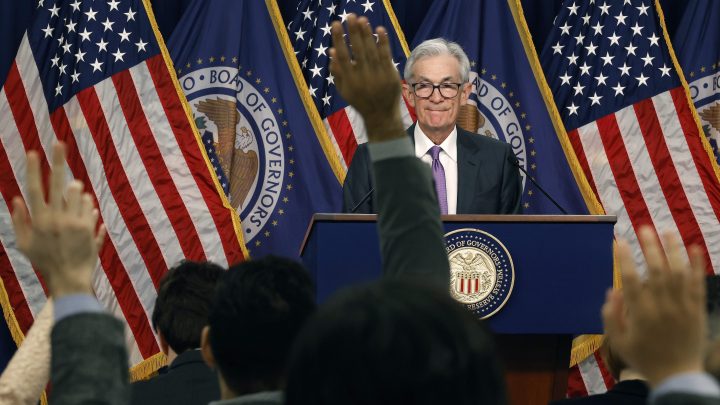
What does the Fed mean when it says it’s looking for ‘good data’?
What does the Fed mean when it says it’s looking for ‘good data’?

It’s been about two years since the Federal Reserve started raising interest rates to curb inflation. On Friday, we’ll get the latest Personal Consumption Expenditures index, the Fed’s preferred measure of inflation. January’s index put core inflation at 2.8% — remember the goal is 2%.
Regardless of whatever February’s index says, it is not going to be enough for the Federal Reserve to start lowering interest rates. Fed Chair Jerome Powell keeps saying he needs to see several months of “good data” for that to happen. So what is “good data” exactly?
The phrase is murky. Even a bit mysterious.
“It’s intentionally vague, I think, to preserve optionality. To never entirely open the door or close the door on any potential move,” said Stephanie Kelton, an economist at Stony Brook University.
Kelton said the Fed has been extra careful with its words because monetary policy isn’t working the way it usually does. Despite high interest rates, the labor market is still chugging along. And recent inflation numbers have been mixed.
“The committee wants to feel confident. They want to see evidence that is convincing enough to say alright, the job is essentially done,” she said.
“Essentially done.” That’s a big statement that requires a steadily falling core PCE. But there are other clues the Fed is likely homing in on in the meantime.
Andrew Levin, an economist at Dartmouth, said one is a labor-heavy category: services inflation.
“Things like haircuts, car repairs, you know, hotels, restaurants. That’s the core of the economy where inflation’s still running hot,” he said.
Another is housing, which eats up a big portion of peoples’ paychecks.
Former Minneapolis Fed President Narayana Kocherlakota said basically, the Fed needs to feel the way it felt at the end of 2023 when, for a solid half year, inflation was falling.
“It doesn’t have to get down to two by any means and in fact I think the Fed would like to start cutting rates before we get to two,” he said.
That means two-point-something is the goal. The Fed, of course, is not going to tell us what that “something” is. Kocherlakota said we’ve still got a bit to go.
“The earliest I think you would see a cut in rates would be June,” he said. And more likely, during the second half of the year.
There’s a lot happening in the world. Through it all, Marketplace is here for you.
You rely on Marketplace to break down the world’s events and tell you how it affects you in a fact-based, approachable way. We rely on your financial support to keep making that possible.
Your donation today powers the independent journalism that you rely on. For just $5/month, you can help sustain Marketplace so we can keep reporting on the things that matter to you.

















